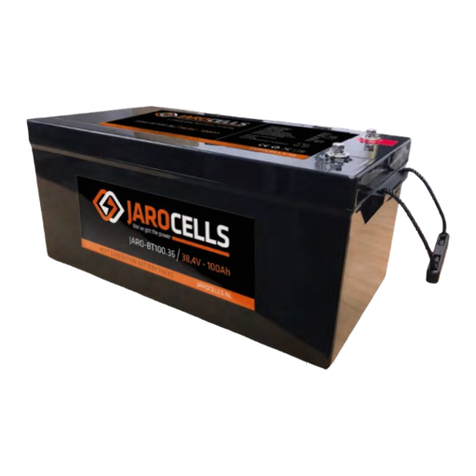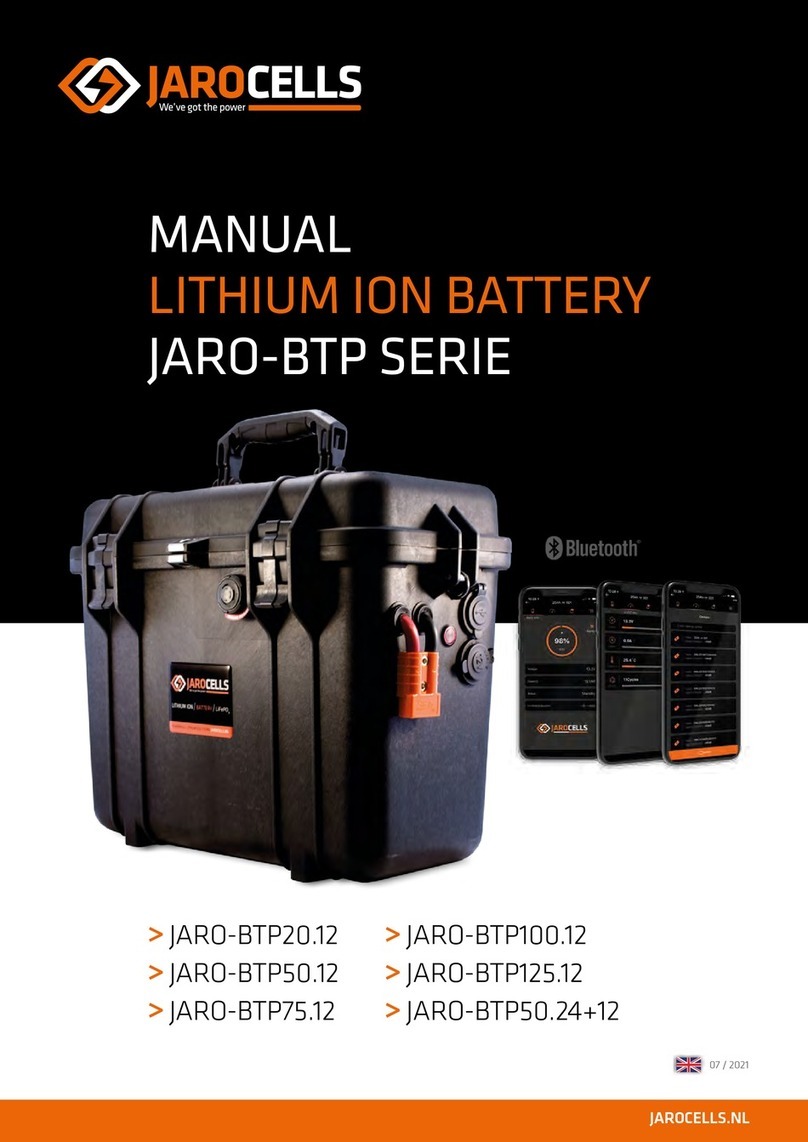
>Use the charger in a dry environment. The charger should be kept away from moisture unless the charger is a waterproof
one.
>The battery should not be charged when the temperature of the battery is below 0°C. Discharging the battery up to
-20°C is allowed. Since the battery temperature will increase during discharge, charging can be done directly after
discharge when the temperature is over 0°C.
>The battery can’t be over-charged and is protected against over-discharging. The safety-electronics will disconnect the
load in case of over-charge or over-discharge.
>Prevent charge and discharge currents outside the specifications. Make sure you install enough battery capacity to
guarantee that currents stay within specification when maximum load is applied. The battery will disconnect in case
of over current but allows higher (peak) currents for a few seconds. Working outside the normal current range regularly
will shorten the life of the battery.
>The battery has a self-discharge rate of 3% per month when no equipment or monitoring instruments are connected.
Check the battery regularly on state of charge and charge in case the battery is below 50% SOC (State Of Charge) or
below 12,8V. Charging the batteries once a month will make sure that the State of Charge readings stay accurate since
the measurement is recalibrated automatically every time the battery is fully charged.
>In case the battery is not used for a longer period it is advised to disconnect all the equipment from the battery to
prevent discharge by e.g. monitoring instruments.
>A fully discharged battery should be recharged within 24 hours. The loads will be disconnected automatically when the
battery is fully discharged but the remaining energy is minimal. Self-discharge can lead to damage of the battery when
the battery is left in fully discharged state for a longer period.
Warning when used in parallel or series
>Before batteries are connected in parallel they should be charged to the same State of Charge level (+/- 10%). This
to prevent high currents and sparks when they are connected in parallel. The voltage on the connections should not
exceed 0,1V dierence at the moment the connections are made.
>When connected in series the batteries should be fully charged separately before connecting them (only 12V batteries
and not more than 3 in series).
>When placed in series the battery pack can be charged by using a 12V charger (dedicated LiFePO4 charger or charged
programmed to the charging specifications) for each battery.
>Charging batteries connected in series with a 12V charger on each battery is allowed when the minus of the chargers
are not connected with each other directly or through ground. Consult an electrician or your supplier in case of doubt.
Warnings for transportation
>Transportation of the batteries should be done packed in the original packaging or a packaging suitable to protect the
battery against shock of falling on the ground.
>Make sure the batteries are fixed properly during transport to prevent shifting of the load.
5
MANUAL LITHIUM ION BATTERY JARO-BT SERIE



























